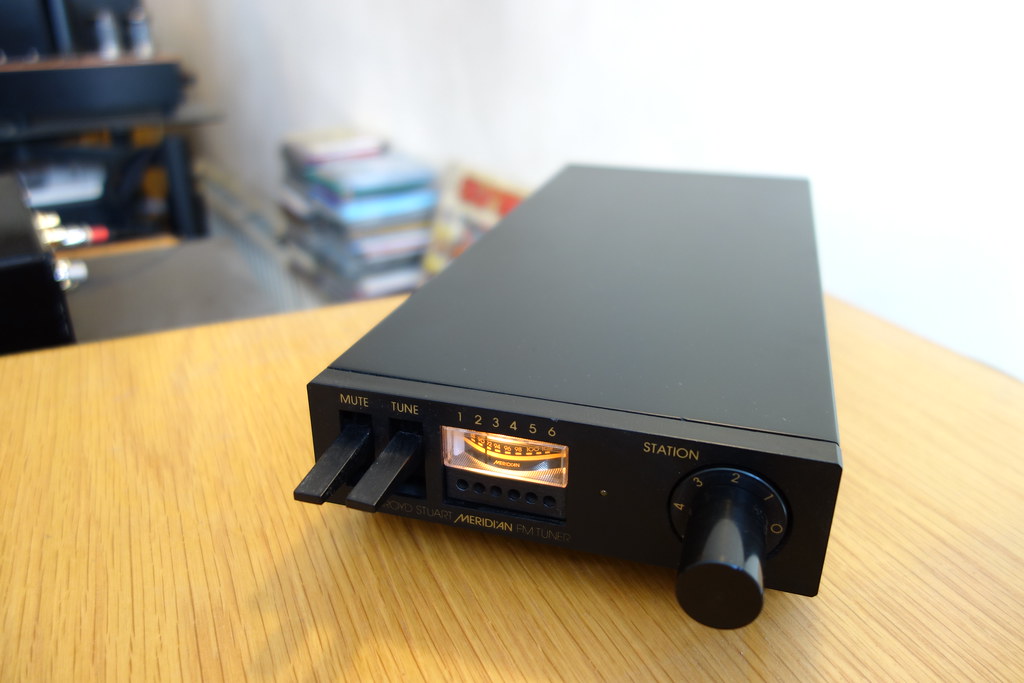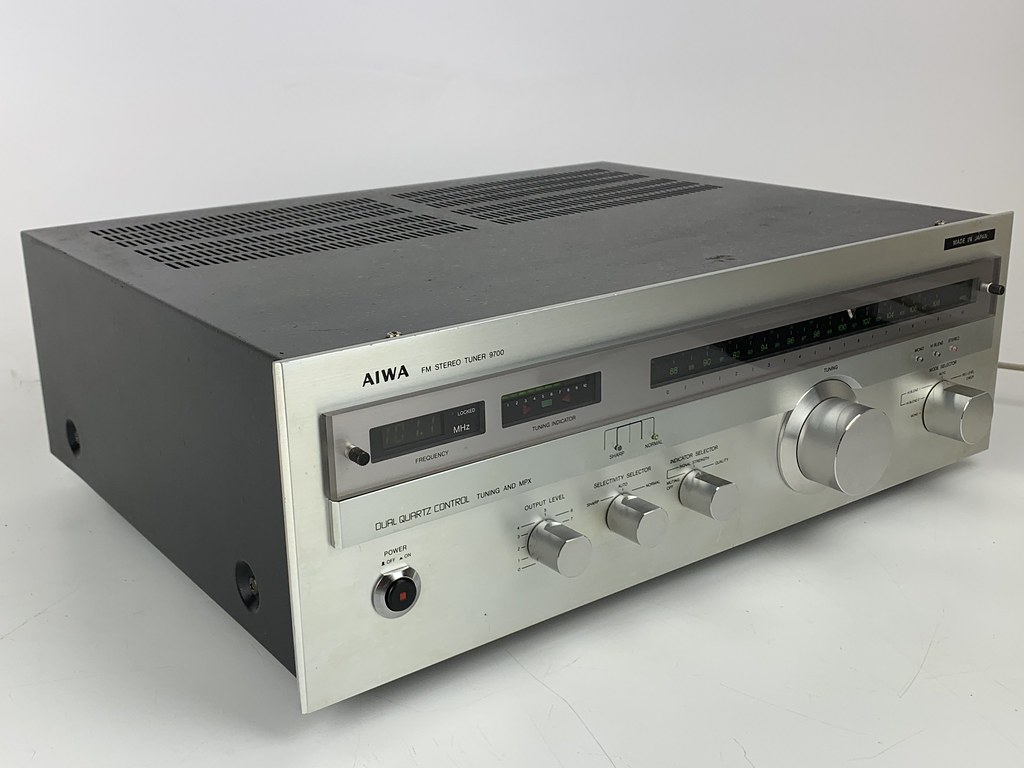Sony Corporation was Japan’s most well-known manufacturer of high-end electronics in 1991, offering everything from Trinitron televisions and MiniDisc recorders to portable video cameras and CD players. Basically, if you wanted a ‘good’ TV or hi-fi, you could skip the hassle of looking around and just get a Sony, which was always likely to be far above average, though not always the best. The brand itself was a seal of excellence – as well as a badge of excellent taste, similar to BMW vehicles or SMEG refrigerators. The £300 Sony ST-S770ES was the company’s best hi-fi tuner, so it had to be good.
It was the top of the company’s premium ES range (above the 500 and 300 series), with exceptional build quality and thoroughbred engineering in a large (430x95x372mm, 5.8kg) container. The ST-770ES, for example, despite the fact that the RDS (Radio Data System) had been around for a few years, did not have it installed, but the cheaper tuners in the range did. Why? Because Sony’s engineers couldn’t get the unit to sound as well as they desired with an RDS chip inside, they decided to remove it. In other words, it was built to prioritize sound quality over all else – but, because it was made in Japan, it didn’t mean it was devoid of the majority of the frills expected of a premium tuner.
The ST-S770ES did indeed have a display that lit up like a Christmas tree; this was no Naim NAT-01. It was, in fact, a clever and complicated design, complete with a bank of thirty FM and AM presets that not only saved the frequency, but also allowed the user to assign a user-input name (remember, there was no RDS) and remember a variety of various settings unique to that preset. These comprised the radio aerial to be utilized (there were two FM inputs), the aerial attenuation level, the IF band, if station muting was required, and the FM mode (mono, stereo or hi-blend). To put it another way, the ST-S770ES provided a vast range of configurations, all of which could be changed instantaneously by pressing a single preset button.
This may seem a little cliched in the present year. After all, haven’t streaming radio from the internet solved a lot of these issues? However, at the time, FM/AM tuners were the only way to access radio, so having this option was a huge plus. The aerial selector switch was unique in that it allowed you to aim two separate FM antennas in opposite directions to increase the amount of stations it could pick up. There were relatively few competing tuners on the market with this feature, therefore it set the Sony apart.
If this tuner had sounded bad, it wouldn’t have been such a big deal, but the Sony was one of the best-performing designs of its day. When you consider its extensive utility, it’s easy to see why it’s so unique: it was a jack of all trades and a master of many. Whether you were listening to FM, MW, or LW, the 770ES outperformed any ‘regular’ hi-fi tuner by a little margin. Then you’d do a second take and wonder why, sixty miles outside the capital, that London FM station was coming through with such clarity. The answer was that it possessed a superior RF front end with superior sensitivity (Sony quoted 0.9uV with a 75 ohm aerial, IHF weighted) than anything its competitors could provide. The Sony drew in FM stations like they were going out of style, even with one of those ‘wet piece of string’ internal ribbon aerials.
It’s one thing to have a sensitive RF front end, but what if you get too many stations and they all bleed into one other? This is a serious issue in central London, but the Sony’s selection was excellent once again (Sony quoted 80dB in Wide mode at 400kHz, and 90dB in Narrow). In other words, it could scan through the congested FM dial, lock on to a certain station, and stick with it no matter what else was going on around it or the weather conditions. This gave the increasingly packed FM dial of the 1990s a feeling of grace – something that other tuners could only dream of. With a signal-to-noise ratio of 86dB, the Sony was eerily quiet once it was locked on station (stereo).
You could, of course, tune in manually if you didn’t want to use your pre-programmed presets. Although the Sony’s huge rotary tuning wheel doesn’t appear to be anything exceptional in 2016, having a large knob to spin through the stations was a joy last experienced in the late 1970s when the 770ES was released. To be sure, practically all tuners in the 1980s had ‘up/down’ push buttons, which were hardly the most logical of controls. However, this Sony stood out once more, with variable muting that responded to the speed of the knob’s rotation, giving it a very ‘analogue-like’ sensation. Even more cleverly, while the station is tuned by a phase-locked loop IC, after the signal has been locked on, the microprocessor’s clock oscillator is turned off. “The received signal flows only through analogue circuitry,” according to Sony, which reduces interference and noise level.
The best of both worlds is offered by this tuner, which features a sophisticated computer-controlled digital tuning mechanism that turns off after tuning is complete, leaving the high-quality analogue tuner to shine through. You’ll need to spend a few minutes establishing the presets (title and settings) during initial setup, but after that’s done, the Sony is quite simple to use. The machine is well-made and finished, albeit not quite up to Sony’s top ‘battleship’ standards, has a slick manual tuning action, and is absolutely fuss-free if you forego this and rely on presets, as most users do.
When the Sony is locked on station, it produces a sound that is highly stable and eerily hiss-free. It’s notable not only for how easy it is to pick up distant FM stations, but also for how quiet it is in the background. Because of its quietness and reliability, it’s easy to confuse a decent roof-mounted antenna with a digital source, for example. When listening to a decent BBC Radio 3 live broadcast, the ST-S770ES sounds better than most CD players. One is immediately struck by the sound’s tremendous authority and nuance.
The bass is the clear standout element. Go to Radio 2 and you’ll find it there, in all its grandeur. The Sony has a heavier bottom end than practically everything this side of a Magnum Dynalab, and it seems to go down a little deeper than other FM tuners. On Coldplay’s Speed of Sound, for example, the 770ES sounds surprisingly powerful and assured in comparison to practically all other FM radios. The music has a natural flow and fluency, and the midband is devoid of grit, noise, and other annoyances. Indeed, rather than the amorphous blob of sound you get from most tuners, it has an unsettling tendency to sound like you’re listening to a bunch of different musicians playing in a studio simultaneously.
Treble is unique in two ways: first, it lacks the layer of hiss that you’d anticipate from stereo broadcasts, and second, it sounds incredibly natural and expansive in comparison to practically all of its rivals. Other tuners appear to be affected by light pollution, whereas cymbals gleam like stars emerging from an inky dark night sky. The overall effect is of a well-balanced tuner with a powerful bass, sharp, three-dimensional and detailed midband, and genuine, atmospheric treble. Fine dynamics and good rhythmic abilities bring it all together; this Sony allows songs breathe better than any but the best tuners, allowing the music to flow with ease. Given how wonderfully the Sony ST-S770ES performs everything, it would be surprising if its AM performance fell short. Obviously, it doesn’t compare to FM in terms of sound quality, but it’s quieter, more steady, and more full-bodied than any other hi-fi tuner I’ve heard. For example, Radio 5 Live is significantly more listenable on this than anything else made in the 1980s and 1990s.
Sony has always developed FM tuners, and has had some very remarkable flagship models along the way, starting with the ST-5950 in 1977, which was the first to market in the UK with Dolby FM. The ES line has traditionally been Sony’s premium line, with the seven series being the top model. The ST-S730ES preceded the S770ES from 1988 to 1990, and the ST-S707ES followed from 1992 to 1995, resulting in a confusing variety of versions. Except for remote capabilities through Control S connections and an IR sensor, the 707 is nearly identical to the latter. The S730ES is a step down in sound quality from the 770ES, but it’s still a great to have.
Prices range from £30 for a broken one on eBay to upwards of £250 for a mint, packaged one with wooden side cheeks in flashy champagne gold (most likely a German import in this spec). Of course, it’s a matter of personal preference, but the black brushed-aluminum version looks like broadcast equipment and is unquestionably the one to have. If at all feasible, try before you buy, and if possible, get a one-owner example rather than one that’s been messed with or moved around like a caravan. A excellent example with well-aimed FM aerial(s) will remind you just how good old fashioned analogue radio can sound when carefully set-up.
The Sony ST-S770ES is a well-kept secret; those who own one know how excellent it is, but they don’t brag about it because, unlike the Yamaha CT-7000, it isn’t very “cool” in traditional hi-fi circles. That’s why, given their capabilities, prices are still fairly inexpensive. In today’s era of internet radio, no nineties analogue tuner is going to cost a fortune, but the fact that these can be found for under £70 second-hand makes them bargains. Ironically, in Germany, where second-hand hi-fi is normally cheaper than in the UK, they tend to be more expensive since people are aware of its capabilities.







